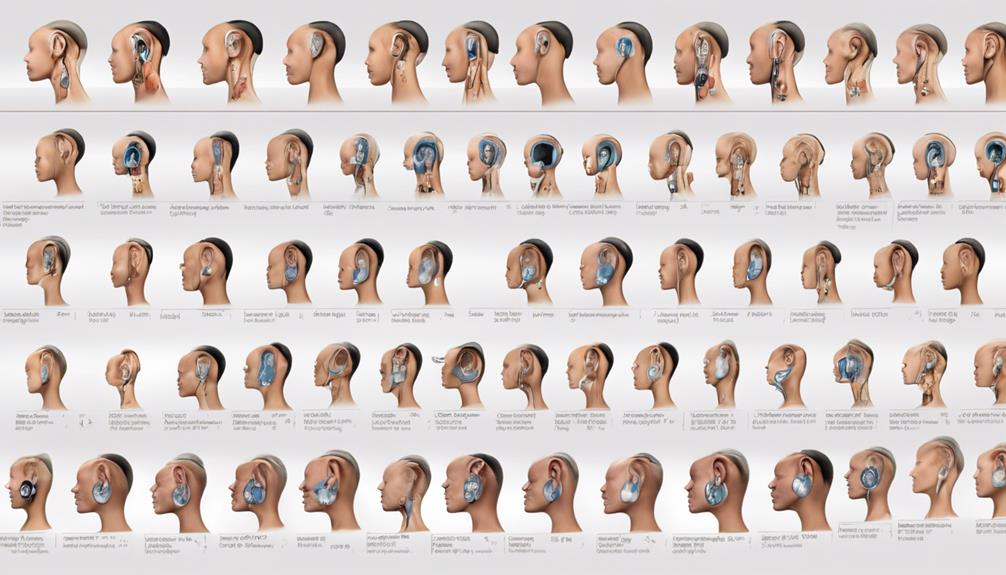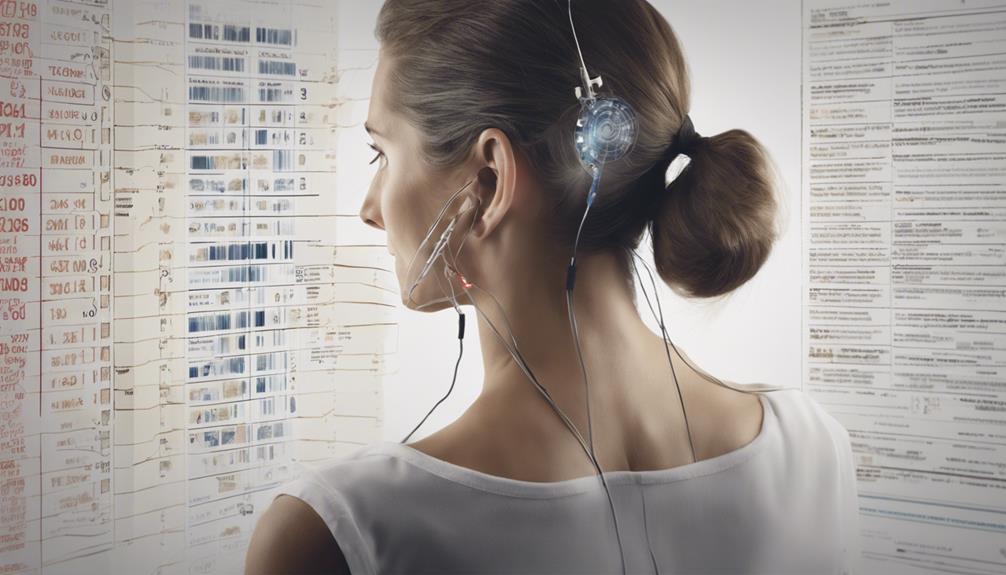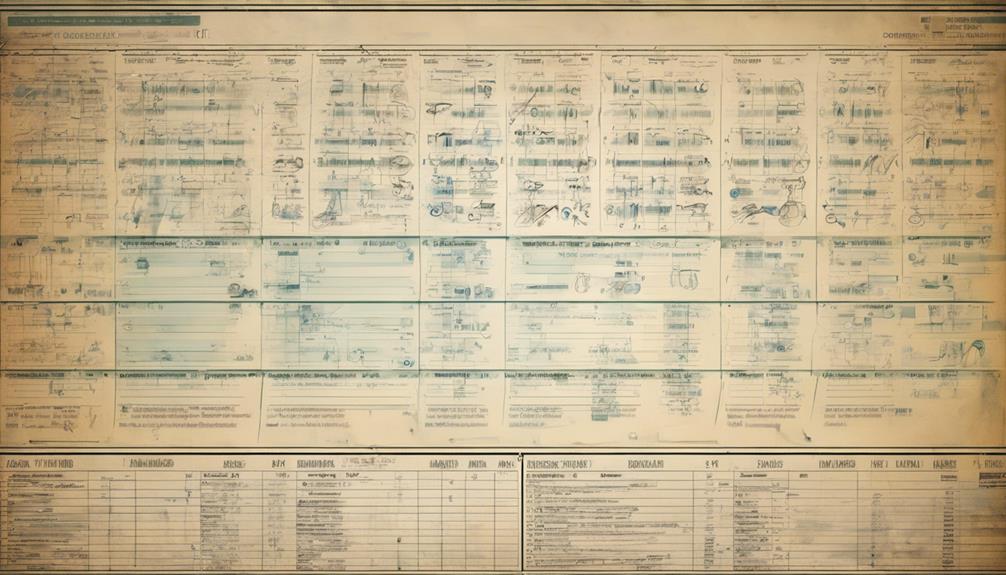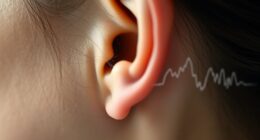Understanding the intricate realm of ICD-10 coding for hearing loss is akin to deciphering a intricate musical piece; each note must be placed correctly for harmony to be achieved. However, decoding the intricacies of these codes is just the beginning.
Understanding how these codes impact patient care and reimbursement is a critical piece of the puzzle. Let's explore how mastering the art of hearing loss coding can orchestrate a symphony of accurate documentation and improved healthcare outcomes.
Key Takeaways
- Accurate coding of hearing loss aids in proper reimbursement and quality reporting.
- ICD-10 categorizes hearing loss with specific codes for unilateral and bilateral conditions.
- Coding guidelines stress differentiation, laterality, and precision for effective reporting.
- Familiarity with common codes like H90.0 and H91.90 ensures precise diagnosis and billing.
Importance of Accurate Coding
Accurate coding for hearing loss is imperative for healthcare providers to ensure proper reimbursement and prevent claim denials. When documenting hearing loss, specifying the type and laterality is essential for precise coding using ICD-10-CM. This detailed documentation not only aids in accurate coding but also supports value-based care initiatives and quality reporting. Healthcare providers rely on correct coding to track patient outcomes and treatment effectiveness effectively.
Proper coding for hearing loss isn't only a matter of reimbursement but also a means of demonstrating the quality of care provided. By capturing the specifics of the hearing loss condition in the documentation, healthcare providers can paint a comprehensive picture that influences reimbursement and care decisions. Medical billing and coding companies play a vital role in assisting healthcare providers in accurately coding for hearing loss, ensuring that the services rendered are appropriately reflected in the billing process.
Overview of ICD-10 System

Navigating the intricate landscape of the ICD-10 system requires a thorough understanding of its classification structure and coding conventions. In the ICD-10-CM, disorders of the ear, including hearing loss, are categorized under codes H90-H94. New codes introduced in 2017 now allow for specific coding of unilateral (left or right) and bilateral hearing loss, with additional codes available for unspecified laterality.
Notably, sudden idiopathic hearing loss falls under subcategory H91.2, while presbycusis, or age-related hearing loss, is coded under H91.1. When documenting hearing loss for coding purposes, it's crucial to specify the type of hearing loss and laterality to ensure accurate reporting. This precision in coding is essential for quality reporting and value-based reimbursement, emphasizing the significance of accurate coding in medical billing processes.
Understanding these nuances within the ICD-10 system is fundamental for healthcare providers striving for excellence in their coding practices.
Coding Guidelines for Hearing Loss

Our exploration of hearing loss coding now shifts to the detailed guidelines that dictate the accurate classification and reporting of various types and presentations of this auditory impairment within the ICD-10 system.
When dealing with hearing loss coding, it's crucial to adhere to specific guidelines to ensure precise reporting and billing. Here are some key points to consider:
- Differentiation of Types: Proper identification of sensorineural and conductive hearing loss is essential for selecting the correct ICD-10 codes.
- Consideration of Bilateral Involvement: Codes for unilateral and bilateral hearing loss allow for accurate diagnosis and appropriate treatment planning.
- Emphasis on Laterality: New codes introduced in 2017 enable the documentation of different types of hearing loss in each ear, aiding in precise reporting.
- Impact on Reimbursement: Accurate coding is pivotal for value-based reimbursement, emphasizing the significance of following coding guidelines meticulously.
Commonly Used Hearing Loss Codes
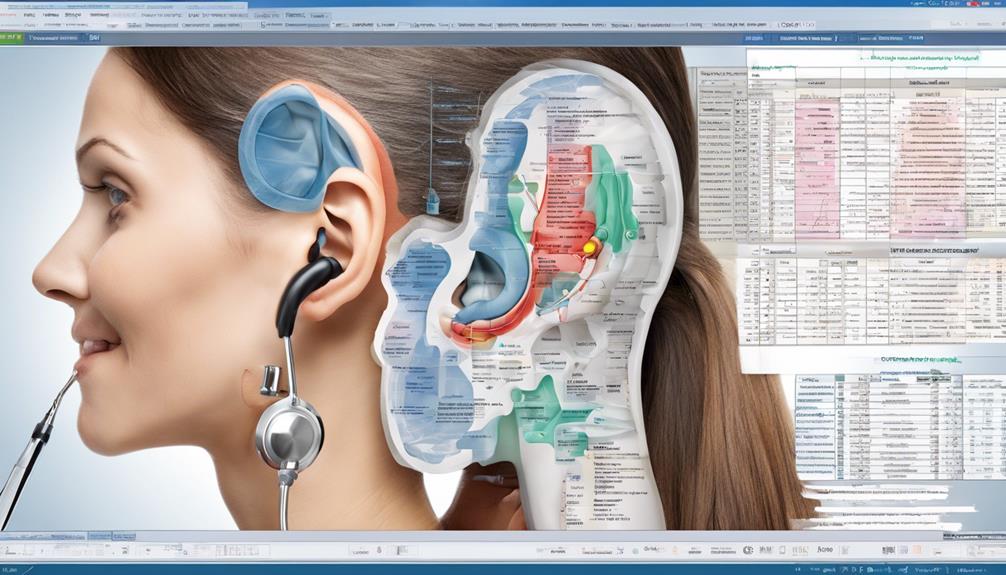
Exploring the realm of hearing loss coding reveals a set of commonly used codes that play a crucial role in accurate diagnosis and treatment planning. In the realm of Hearing Loss ICD Codes, H90.0 to H90.4 are significant for capturing both conductive and sensorineural hearing loss.
For instance, H90.0 represents bilateral conductive hearing loss, while H90.4 is assigned to unilateral sensorineural hearing loss. When encountering unspecified hearing loss in an unspecified ear, healthcare professionals turn to H91.90.
Commonly used codes like H90.0 for bilateral conductive loss and H90.3 for bilateral sensorineural loss aid in precise diagnosis and billing processes. Furthermore, specific codes such as H91.2 for sudden idiopathic hearing loss and H91.1 for presbycusis are instrumental in accurately documenting different types of hearing impairments.
Familiarity with these specific hearing loss codes is essential for effective ICD-10 coding, ensuring proper diagnosis and appropriate billing procedures.
Billing and Reimbursement Considerations

Understanding the intricacies of billing and reimbursement considerations in cases of cerumen impaction and hearing loss is vital for accurate coding and insurance payments. When dealing with these issues, providers must pay close attention to Dx codes like H91.90 for unspecified hearing loss to ensure proper reimbursement.
Additionally, denials related to ABR codes 92585/92586 can be minimized through consistent and accurate Dx coding practices. Coding for bilateral diagnoses in hearing loss cases demands a thorough understanding of the patient's condition to report it correctly.
The CANPC Anesthesiology Coding Essentials offer invaluable guidance, particularly in cases involving general endotracheal anesthesia. By mastering anesthesia coding and staying up to date with ICD-10 guidelines, providers can navigate the complexities of billing and reimbursement with confidence and precision, ultimately ensuring optimal care for patients.
Frequently Asked Questions
What Is the ICD-10 Code for Impaired Hearing Loss?
The ICD-10 code for impaired hearing loss is H91.9. It encompasses unspecified hearing loss and unspecified ear conditions when the specific cause isn't known. This code is vital in accurately classifying hearing impairments.
However, it doesn't include issues like abnormal auditory perception or noise-induced hearing loss. Proper documentation is crucial to ensure precise coding and billing for impaired hearing loss.
What Does H90 3 in Hearing Loss Mean?
H90.3 in hearing loss means bilateral sensorineural impairment, signaling permanent inner ear or nerve damage. This code encompasses cases where both ears are affected, often due to aging, noise exposure, or medical conditions.
Accurate coding and documentation are vital for billing and treating sensorineural hearing loss. Proper understanding of H90.3 aids in providing effective care and support for individuals facing bilateral sensorineural hearing challenges.
What Is the ICD-10 Code for Hearing Loss in 2023?
The ICD-10 code for hearing loss in 2023 is crucial for accurate medical billing and coding. It allows healthcare providers to document the type and laterality of hearing loss effectively. Proper documentation ensures correct reporting and treatment.
Understanding the correct ICD-10 code streamlines the billing process, leading to improved patient care and accurate reimbursement. It's essential to stay updated on the latest coding guidelines to provide quality healthcare services.
What Is the ICD-10 Code for Sensorineural Hearing Loss of Both Ears?
We use the ICD-10 code H90.3 for bilateral sensorineural hearing loss, indicating impairment in both ears due to inner ear or auditory nerve damage.
Accurate coding documenting the type and laterality of the hearing loss is crucial for effective communication among healthcare providers and precise billing.
Proper coding ensures services are billed correctly.
Conclusion
In conclusion, accurate ICD-10 coding for hearing loss is vital for proper diagnosis and treatment.
One interesting statistic to note is that approximately 15% of adults aged 18 and over report some trouble hearing. This highlights the prevalence of hearing impairments and the importance of utilizing specific codes like H90.0 and H90.3 to accurately document and address different types of hearing loss in healthcare settings.
Proper coding ensures effective care and reimbursement for patients with hearing impairments.

